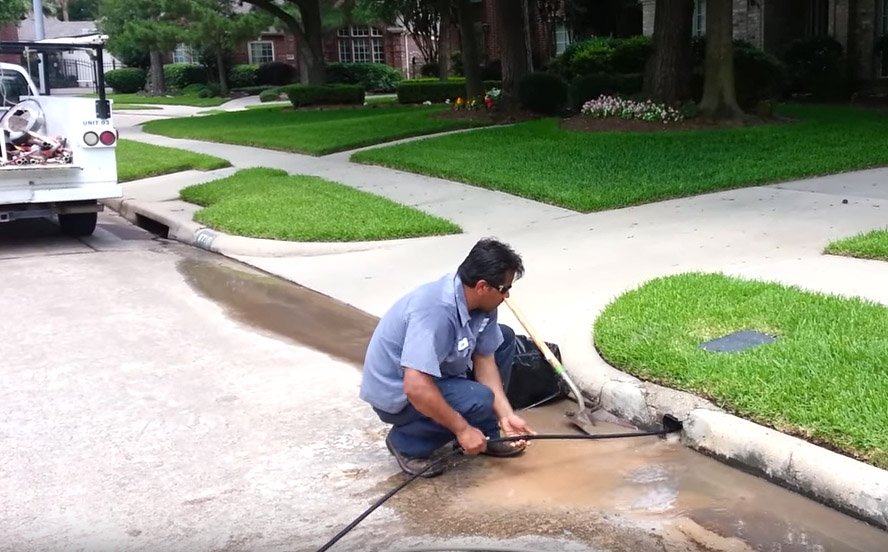Do You Have Slow Or Clogged Yard Drains? Here’s How To Fix Them.
Yard drains and driveway drains help remove rainwater from your property into the storm sewer or other drainage system like a catch basin or French drain to help keep your yard dry. Check for obvious things blocking the drain like leaves, dirt, stones, toys, trash, etc. Remove any of these items that may be present…
Sprinkler Freeze Alert For The Houston Area
The temperature is expected to plunge in the Houston area for most of this week. Starting on Monday we’ll see a low of of at least 17 degrees, and some reports state that it could get into single digits and we will have snow fall. During hard freezes like this it is critical to properly…
High Temperatures Expect Throughout The Week – It’s Time To Service Your Sprinkler System
The Houston area is expecting temperatures to rise to the mid-nineties throughout the week. Hight heat can damage your lawn without proper irrigation. Did you know that improperly adjusted sprinkler systems, leaky pipes and broken sprinkler heads can waste thousands of gallons of water. Have your system serviced by JB Irrigation’s technicians now before the…
How to Prevent Fertilizer Burn During the Summer
During the warm summer months, everyone wants to enjoy their lawns. Unfortunately, the summer heat can also stress turf and increase the chance of lawn damage from fertilizer applications. Before choosing a fertilizer for summer turf, knowing the difference between nitrogen sources will help you reduce the possibility of fertilizer burn. Quick-release fertilizers Fast-acting fertilizers…
Control Your Lawn Watering From the Palm of Your Hand With Our New Wi-Fi Controllers
Upgrade to an App Based Smart Irrigation Controller With the rise of the smart home, more and more homeowners are interested in being able to see and control their irrigation right from their phone. Some common benefits include: Run system manually from any location without accessing the control panel Water savings Automatically watering plant the…
How do I start up my sprinkler system this season?
Spring start up can be easily done by following these steps. 1. Turn on the water supply. 2. Activate each station on the system with the controller 3. Walk through each station to verify the proper operation 4. Program the controller for automatic operation 5. Verify weather sensor is operational The first step is to…
Working Hard, Dirty, And Late For Our Customers!
JB Irrigation Techs were literally up to their knees in mud repairing this broken irrigation main pressure line. They had to fight the tree roots too. They stuck with it and got it fixed for our customer! Thanks for staying late on a Friday guys!
Getting Our Fleet Ready For Your Sprinkler System Service Calls – Oil Change And Fleet Maintenance Days At JB Irrigation
The weather has been rainy, cold and damp. You’re probably not thinking of Irrigation. We are! We are getting ready for you! Check out behind the scenes here at the JB Irrigation yard where we are getting our trucks ready so we can service your sprinkler system this season!
Correcting Yard And Foundation Drainage
Improving the drainage outside your home will yield long-lasting benefits. Failure to correct inadequate drainage could lead to disastrous consequences ranging from drowned plants to structural damage. Water is the major cause of structural problems in a home, such as decayed wood, fungus growth, and settling or upheaval of the foundation. Provide drainage with surface…
It’s Not Too Early to Prep for Spring Drainage…Prevent Future Flood Damage
Before preparing your landscape for hibernation this winter, take a look at your lawn and landscape drainage. Installing or repairing the landscape drainage will prevent any potential problems with flooding or excessive water when spring rolls around. Here are four drainage issues to look out for: Evaluate your yard First things first, you will need…
How Proper Drainage Systems Can Help Your Landscape
In the video below you will learn how proper drainage systems can help your landscape: For more information on how we can help you visit our contact page.
Maintain & Upgrade Your System
Irrigation systems need regular maintenance to keep them working efficiently year after year. Damage from lawn equipment or improper winterization can cause leaks and other serious problems. Inspect your system monthly. Check for leaks, broken or clogged sprinkler heads, and other problems. Clean clogged screens and micro-irrigation filters as needed. Adjust sprinkler heads. Remove or…












